Over 6 months after The Blackout, where are we now?
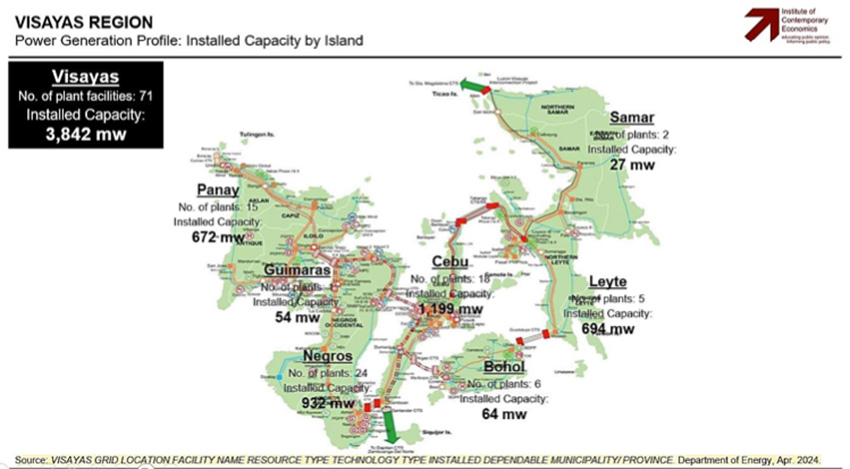
Sitting on pins and needles
It’s the rainy season. As the inexcusable New Year’s Blackout recedes further in our rear-view mirror, the cool weather we experience breeds a false sense of security over the state of our power situation.
We remain very concerned about the likelihood that the total blackouts that happened in January and the year before in April 2023 will happen again. It is quite difficult to assess the results of the hearings by both houses of Congress given that no Committee reports have been made publicly available.
As we stated in our paper (1) back in January, “(T)he point of any investigation is always to learn more about what happened to ensure that it does not happen again particularly given the high stakes involved. The second part, if necessary, is to seek accountability. Without accountability, lessons will not be learned, and consequences are not brought into play.” Sadly, over half a year later, we have gotten neither.
Iloilo growth can be capped
The importance of knowing the reliability of power supply in Iloilo and by extension, Panay Island, is critical as investment interest in the region has been uncommonly high. This is on top of the economic growth that has seen Iloilo as being among the fastest growing provinces in the country.
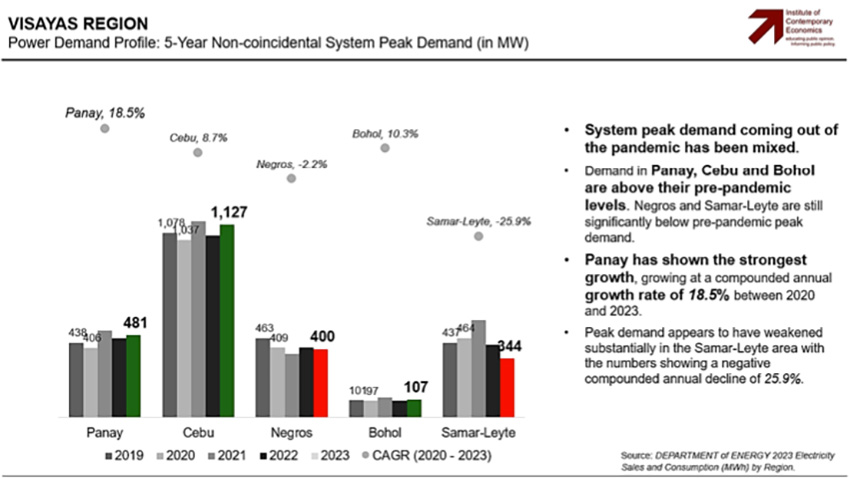
This growth has seen Panay Island seeing the highest growth rate in power demand coming out of the pandemic (Chart A). Coming out of the pandemic, Panay Island has seen power demand surge at a compounded annual growth rate (CAGR) of 18.5% between 2020 and 2023. This is the highest among the components of the Visayas Grid network.
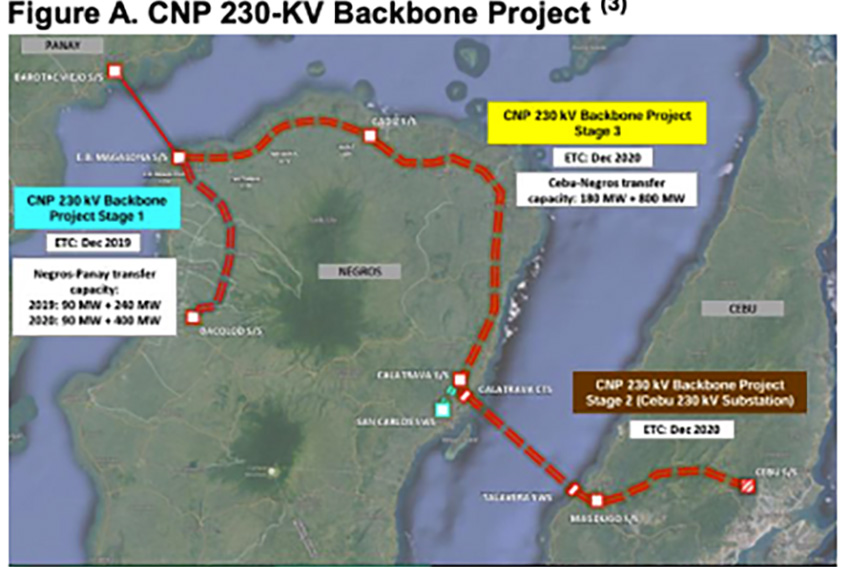
The energization of the CNP backbone with the completion of the Negros-Panay Interconnection Projection Line 2 in April of this year will definitely help. Having said that, this will only reduce, not eliminate the chance of having another catastrophic event similar to what was experienced twice in the last two years.
To put this in context, blackouts have been considered as “once in a lifetime” events. This has obviously not been our experience, but this is precisely one of the unstated policy declarations of EPIRA. Numerically, the CNP backbone reduces the probability of a blackout from 50% to 10-20% according to industry resources. Despite the significant reduction of the probabilities, this is still not in the realm of a “once in a lifetime” event.
Bottleneck
We caution, however, that clarification is needed on a bottleneck that appears to have the effect of not maximizing the impact of CNP. It seems that the transmission infrastructure currently in the place is not sufficient to maximize the amount of power that can be transmitted.
The 230KV CNP transmission line lands at the Barotac Viejo sub-station of NGCP. The power that then gets transmitted out flows on 138KV lines that take the supply to the sub-stations of the various electricity distribution companies in Panay.
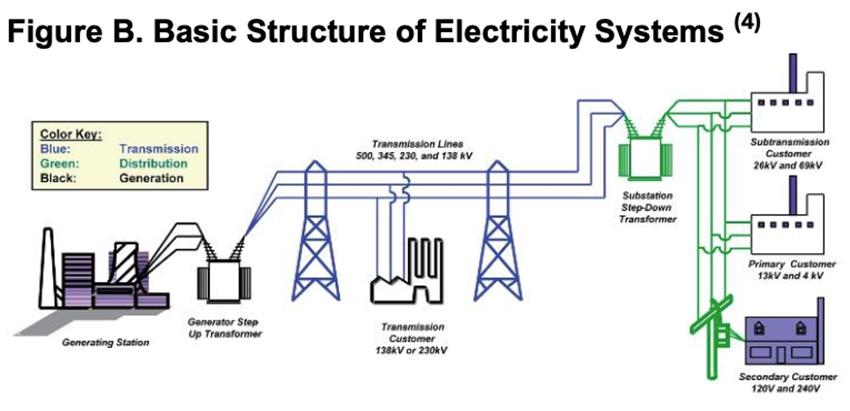
Without going into too much technical detail, the question that has been raised is how much power transmitted over a 230 KV line actually gets transferred over to a 138 KV line?
A simplified description would be that the amount of power that travels over transmission lines is dependent on the pressure (volts) and speed/current (amperes) (power = pressure x speed/current) at which it travels over these lines. To reduce losses, transmission from a generating plant to distribution sub-stations travels along high-voltage lines. Typically, to compensate for the higher voltage, the current is adjusted downwards so that the amount of power which gets to the sub- stations remains the substantially (5) the same.
Local industry experts, however, tell us that this is not what happens in our case. The current apparently remains the same. Since the transmission line emanating from Barotac Nuevo is only 138 KV, the amount of power that is eventually transferred over to Panay is significantly less than what it otherwise would be. The solution is for NGCP to upgrade the Barotac Viejo substation to have greater capacity to receive and transmit the maximum power supply that can pass through the CNP line from Negros to Panay.
The CNP backbone was established to supplement the on-island generation capacity on Panay. This is particularly important for two reasons, (1) so our electricity distribution utilities can (theoretically) access low-cost power supply from hydropower and other renewable energy power generators in Leyte and Negros; and (2) to access power during periods when on-island power generators are not able to operate due to maintenance or unscheduled interruptions.
Demand and Supply
Department of Energy data shows that peak demand on Panay was 481 megawatts (MW) in 2023. Our estimates, show that there is installed generating capacity on Panay of 821 MW. Of this, only 714 MW is dependable capacity. So, on balance, we have enough generating capacity to meet current demand.
The tricky part with Panay’s generating capacity stem from two things. First, we have a lot of large plants where when one or two of these plants go offline, the demand-supply situation becomes critical. Second, about 100 MW of our local (including Guimaras) generating capacity comes from “intermittent” renewable energy sources.
The bottom line is that our current on-island supply of power is just enough cushion for current demand. There is not enough to sustain future economic growth.
Urgency needed
We ran two scenarios (Chart B) with the first scenario showing 5% annual growth in demand and another with 10% growth. We also kept dependable capacity at current levels and added a variable showing dependable capacity less renewable energy resources.
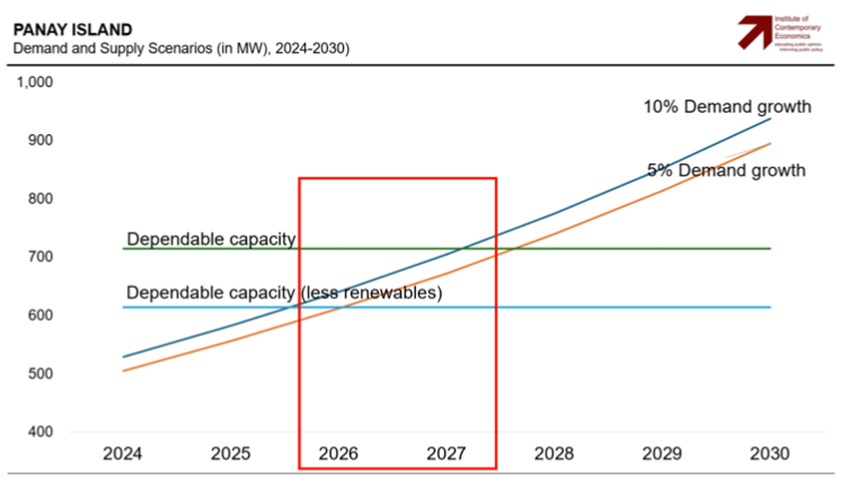
The chart would show that we are 2-3 years away from an untenable demand and supply situation. It would be difficult to imagine economic growth, much less sustained economic growth, under these conditions.
Per the DOE, there are 9 committed projects with total generating capacity of 410 MW in the pipeline estimated to be operational between 2024 and 2026. While hopeful, we expect only 30-50% of this capacity to actually come in before the end of 2026

FINAL THOUGHTS
The power situation in Panay has marginally improved, if only with the energization of CNP.
There remains the need to reach some conclusions as to the January 2024 and April 2023 blackouts. Beyond the fingerpointing, we need to know what the root cause of the event was, the manner in which it cascaded and the measures to be and more importantly, that have been taken to prevent its re-occurrence.
Economic growth will not be sustained at its current pace should additional investments in improving capacities in the existing distribution infrastructure and building new on-island power generation facilities. Renewable energy sources with its inherent intermittence limitation cannot, alone, be relied upon as a reliable source of generation capacity. Even now, options for a nuclear energy and/or natural gas plant power generating facility must be explored and pursued. These are our only remaining baseload capacity generation source prospects given the ban on other new fossil-fuel plants.
In the short-term, steps must be taken to encourage the grid operator to upgrade its Barotac Viejo substation to maximize the impact of the CNP infrastructure.